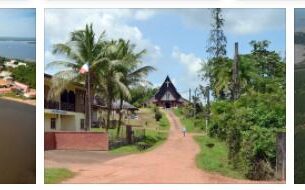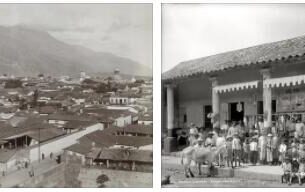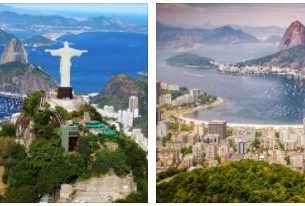Population. – According to ezinesports, the Brazil remains one of the largest countries (8,511,965 km 2) and most populous (over 150 million residents) of the Earth: it occupies 48% of South America and hosts 51% of the population, ranking fifth by area and sixth by population in the world. It records one of the highest demographic increases (2.3% per year), both the cause and consequence of its underdevelopment. This increase is linked to the natural dynamics of the population, as the balances of migratory movements are contained. In absolute value, the increase was over 30 million people in the inter-census decade 1970-80, always remaining at a very high rate, given that in the following five years it exceeded 10 million. This growth has led to extraordinary human densification, expansion of degraded urban peripheries, accentuation of misery in large areas, very serious health shortages, social disorder, delinquency and lack of security; all phenomena in front of which the state continuously measures itself, often with little success. The greatest percentage increases occurred in the depopulated regions of the North and East, where large public works were carried out. In these areas, the overall population has almost doubled in the space of fifteen years. The South, on the other hand, more prosperous and advanced, recorded the least increases. The capital, Brasília, which in 1970 had 540,000 residents, in 1989 had a population of 1.8 million.
The growth of cities has occurred at even greater rates than demographic changes, especially aggravating the problems of large metropolitan areas. The increases in the poorest or already saturated areas, such as Recife or Rio de Janeiro, are more contained, while the urban population increases in the metropolitan areas located in the more advanced regions, such as São Paulo, Belo Horizonte, Salvador have been substantial. These metropolitan bodies have already reached exuberant dimensions and tend to become ungovernable, because – in a decade – they have seen their population increase by more than half and are unable to meet the demand for work and services. Particular aspects assume Brasília or Curitiba, where for different reasons the strong demographic increases have not created imbalances comparable to those of other “millionaire cities”. A quick examination of the smaller cities allows us to record even higher percentage increases, especially in inland regions (Manaus; Goiânia), in which the urban network associates political-administrative and cultural functions with industrial and commercial activities.
Economic conditions. – With an average per capita income just over 2100 dollars a year (1988 estimate according to World Bank data), Brazil still has dramatic internal imbalances and unexplored development capacities. The country has opened up to foreign capital, which has favored the construction sector, raising forests of skyscrapers, and the industrial one, especially in the mechanical and chemical branches. The country has great resources, from mining to forestry and energy sources; of an enormous livestock patrimony (134 million cattle, 20 of sheep, 32 of pigs, 10 of horses) and of extraordinary productive potential in the agricultural field, especially if the use of water for irrigation purposes is developed. In all these fields, the progress made in recent years has been considerable, as can be seen from the data reported here.
In less than fifteen years the production of maize has gone from 145 to 250 million q, that of rice from 75 to 120, that of potatoes from 17 to 23, of tomatoes from 8 to 23, of wheat from 15 to 55, of citrus fruits from 44 to 163, pineapples from 4 to 10, soybeans from 46 to 180, while various others have undergone minor increases. Coffee went from 12 to 15 million q, cocoa from 2 to 4, sugar from 70 to 85 (see also ethanol, in this App.). Electricity production went from 55 to 202 billion kWh.
The Brazil has modest energy sources (coal, oil, natural gas), but large hydroelectric plants with an installed capacity of millions of kW, especially on Rio Grande, Paraná, and São Francisco, where large lakes have been built in recent years. artificial, from which much of the country draws electricity.
The intensification of forest exploitation is also considerable: in a decade the production of timber has increased from 164 to 241 million m 3 (1987).
Mineral resources are abundant in the vast plateau, where gold, diamonds, iron, manganese, tin, nickel, lead, copper, bauxite, chromium, tungsten and many other minerals are exploited.
Oil and natural gas come mainly from the state of Bahía, coal from Rio Grande do Sul, phosphates from that of Pernambuco. Significant increases in the production of underground resources from the early 1970s to the mid-1980s (coal, from 2 to 7 million t; iron from 35 to 125 million t; gold from 5000 to 83,000 kg; tin from 3000 to 42,000 tons; bauxite from 500,000 to 7 million tons).
Energy sources, soil and subsoil resources support an industry in the process of being strengthened and capable of also feeding outward flows. The large industrial center of the Brazil is São Paulo, where production companies of all kinds are concentrated, from food to textiles, metallurgical and mechanical, chemical, paper, electronics. Rio de Janeiro and Rio Grande do Sul follow at a distance. Among the most developed industrial branches we can distinguish the textile one (cotton, wool, synthetic fibers), mainly located in the cities of the central-southern states, the food one (sugar, tobacco, beer, frozen products, etc.), mainly concentrated in the large metropolis, the steel industry (23 million tons of cast iron and 24 of steel), which has its major center in Volta Redonda, and metallurgy (tin, aluminum, lead, copper, zinc). The mechanical industry (cars, ships, airplanes, tractors, railway equipment, bicycles, etc.) has the main factories in São Paulo and Rio de Janeiro and their suburbs. The production of cars (one million per year, for four fifths of cars), for which the Brazil occupies the tenth place in the world, derives for the most part from São Bernardo do Campo (near São Paulo) and from Cidade dos Motores near Rio de Janeiro, in the first with national material, in the second with assembly of material from abroad. In Brazil operate important European car manufacturers (Volkswagen, FIAT), which also supply other South American countries.
Unlike Argentina, the Brazil has always kept the doors open to foreign investments who, if on the one hand have provoked conspicuous forms of speculation, on the other have ensured the country considerable economic advantages.
Routes of communication. – The Brazil has a good road network and a decent car park (1 car for every 14 residents), considering the structure and distribution of the population, with a high concentration in the southern part, and boasts good air services, thanks to its company internationally renowned flag. The extension of large roads to the Amazon with extensive population programs has created international concerns for possible environmental damage and for the excessive exploitation of forests, in the absence of appropriate forest improvement works and real reforestation..



